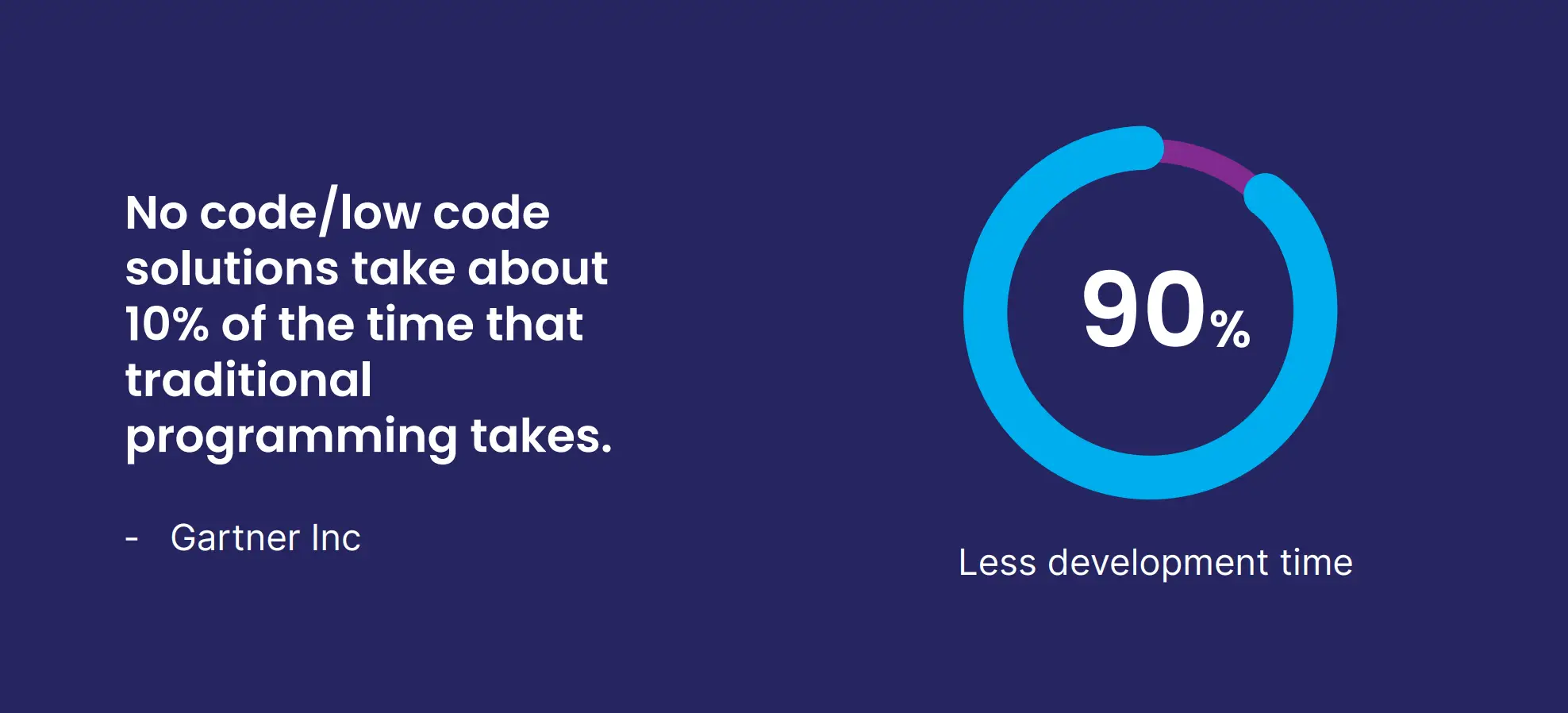Since the rise and growth of low-code platforms, the world of software development has undergone a revolutionary shift. These platforms have fundamentally changed the way businesses develop and deploy applications.
How low-code has evolved
Low-code enables businesses to respond quickly and efficiently to changing market needs, with less reliance on specialized IT professionals. In this blog, I explore the state of low-code beyond 2020 and discuss some predictions about the future of this powerful development method.
I have summarized the predictions about low-code from various research platforms in one clear infographic. Download the PDF here.
Looking back at the rise of Low-Code
The need for digital transformation for business processes has accelerated in recent years. Standard systems, Excel administrations and outdated software limit the growth and agility of organizations.
Companies must move faster and faster to adapt their business models and remain competitive. Low-code platforms play a crucial role in this by providing companies with the tools to quickly develop applications that enable them to respond to new challenges in a timely manner.
Facts and predictions about the future
Looking to the future, we see that low-code will play an increasingly central role in software development. For example, Gartner predicted in 2022 that the global market for low-code development technologies would increase by 20% by 2023.

4 Predictions about the future of Low-Code
- Mainstream acceptance
Due to the continued shortage of programmers and the growth that has occurred in recent years, low-code will further establish itself as a mainstream development method, comparable to traditional programming languages. Companies will increasingly use low-code as their primary development method.
- AI Integration
Artificial intelligence and machine learning will be further developed and increasingly integrated into low-code platforms. This will lead to even smarter and more efficient development processes, with AI-based recommendations and automations further increasing productivity.
- Security and governance
As low-code is increasingly deployed for business-critical applications, security and governance will play a greater role. Future platforms will offer more comprehensive features to suit the security needs of large organizations. The changes in data security legislation within the EU will contribute to an increased need for applications that can be quickly updated.
- Integration with legacy systems
Legacy systems are often the cause of integration problems, slow innovation and slow processes. Low-code platforms will provide better and easier ways to integrate with existing systems. This makes it possible for companies to modernize their outdated systems, with all the benefits that entails, without having to completely replace them.
A unique opportunity for unprecedented growth
Post-2020, low-code platforms have experienced unprecedented growth, proving their value as powerful tools for organizations. The next 20 years look bright for low-code, with further improvements in functionality, integration and ease of use.
For companies that want to continue to compete in a rapidly changing market, low-code offers a unique opportunity to accelerate their development processes and increase their innovative power. It is clear that low-code is not just a temporary trend, but a lasting development that will determine the future of software development. Especially now that AI is taking greater steps in software development.

Want to read more about the future of Low-Code?
I have summarized the predictions about low-code from various research platforms, such as Gartner and Straits, in one clear infographic with all the information you could need. Download the free data sheet 'Growth of low-code development after 2020' here.
Download now












